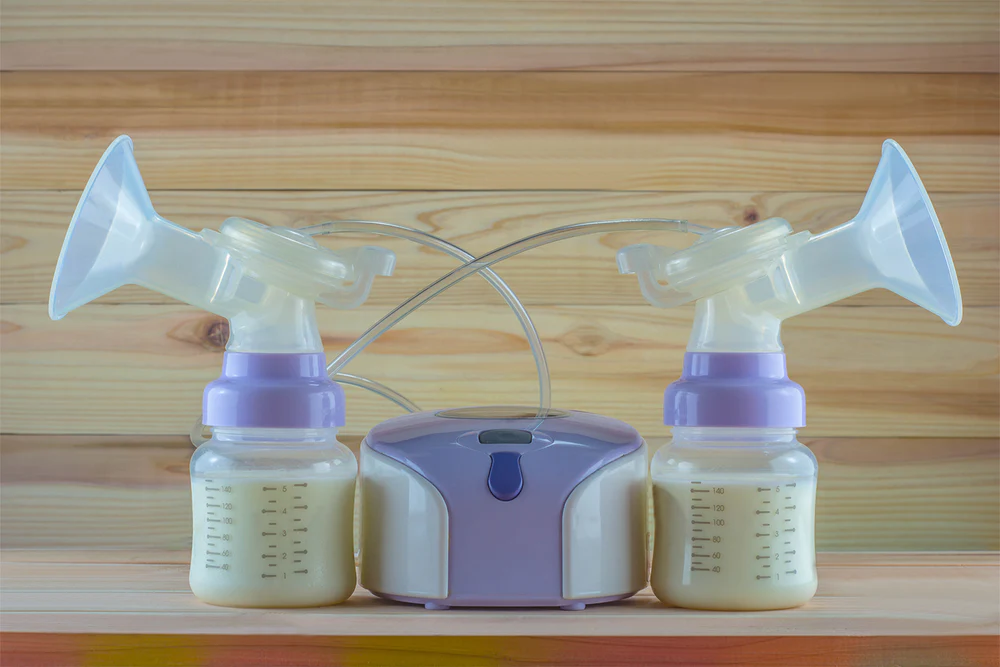The first year of parenting is full of milestones: The first time your baby sleeps through the night, the first time they crawl, and the first time they sit up can all be exciting moments in this new chapter of your life.
Beginning to feed your little one foods other than infant formula is also exciting. But with this milestone, there are some recommendations to keep in mind. If you want to feed your baby yogurt or any other solid food, you likely have questions.
Keep reading to learn when babies can start eating yogurt and the answers to all your other questions regarding baby food in the first year of life.
Getting on Solid Ground: The Benefits of Yogurt
When Can My Baby Try Yogurt?
Doctors and healthcare providers generally recommend waiting until your baby is at least six months old before introducing any solid foods, including baby yogurt. Once they reach six months of age, your baby’s digestive system is more mature, and they’re better equipped to handle the introduction of new foods.
Is Yogurt Healthy for Babies?
Scientists theorize that unsweetened yogurt may help boost baby brain development since it’s full of zinc, protein, and iodine.
Yogurt is a good choice for introducing your baby to solid foods because it’s easy to digest and contains beneficial probiotics. Note that the health benefits of probiotics for infants have not yet been validated by definitive research.
The Best Yogurt for Babies
You might be eager to give your baby a try of your favorite breakfast food, but when it comes to regular yogurt, you should wait a bit longer before introducing your little one to it.
Specifically, experts recommend waiting to give your baby regular yogurt until they are at least nine months of age.
There are many different types of yogurt, and some might work better than others when your little one is starting solid foods.
- Greek Yogurt: This is suitable for older babies who are comfortable with solid foods. Actually, it’ll likely be easier for your baby to self-feed (hello to a mess!).
- Full-Fat Yogurt: This one might be easier for babies to digest since it has less lactose than reduced-fat versions.
Why Do You Have To Wait?
There are a few reasons why you should wait until your baby is at least six months old before introducing yogurt.
First, breast milk or formula provides all the necessary nutrients your baby needs for the first six months of life. Introducing solid foods too early can lead to digestive issues, such as diarrhea, constipation, or upset stomach.
Second, introducing yogurt before your baby is six months old could increase their risk of developing a milk allergy. That’s because the proteins in cow’s milk are not easily digested by a baby‘s immature digestive system and can cause an allergic reaction or other digestive issues, such as gas or bloating.
Baby yogurt, on the other hand, is specially formulated to be easier to digest and is made with whole milk, which contains the necessary nutrients for your baby’s growth and development. It also will be free of the added sugars that tend to be common in regular yogurt.
Waiting until your baby is six months old before introducing yogurt (and other solid foods) may help reduce the risk of developing a milk allergy or other digestive problems.
What About Other Solid Foods?
Introducing your baby to solid foods is an exciting milestone in their development. It’s a sign that they’re growing exactly as they’re supposed to and are ready to explore new tastes and textures.
Pediatricians and registered dietitians typically recommend waiting until your baby is around six months old before starting them on solid foods. That’s because prior to this age, your baby’s digestive system is still developing, and introducing solid foods too early can be hard on their tummy.
But how do you know if your baby is ready for solid foods? Aside from the general guidelines, there are a few cues you can pay attention to from your little one to let you know that they’re ready for solid foods.
Signs you can look for include:
- Your baby can sit up with support.
- Your baby has solid head control.
- Your baby shows interest in what you’re eating.
- Your baby has doubled their birth weight.
If your baby is showing these signs, it’s a strong indicator that they’re ready to start trying solid foods. Don’t worry if your baby doesn’t show these signs right at six months.
Every baby is different, and it’s essential to follow your baby’s lead rather than any preconceived timeline. And if you aren’t sure about what exact timeline is right for your little one, don’t hesitate to reach out to your pediatrician for advice.
How To Start Introducing Solid Foods
When introducing solid foods, start with simple, single-ingredient foods like pureed vegetables or fruit. This can help you identify any food allergies or intolerances your baby may have and help them adjust to new foods over time.
As your baby starts to get more used to eating solid foods, you can introduce more complex flavors and textures. You can also begin to incorporate foods from all the different food groups to ensure all the necessary nutrients are on their plate.
Remember to introduce new foods one at a time and wait a few days before introducing another new food. This can help you identify any food sensitivities or potential allergens.
Additionally, stick to finger foods. Without teeth, your baby will struggle to eat and digest foods that aren’t soft or cut into tiny pieces.
Finally, don’t forget to make it fun! Eating solid foods for the first time is a new and exciting experience for your little one. Make mealtime a positive experience by sitting with your baby, talking to them as they explore new tastes and textures, and cheering them on when they try something new.
Solid Foods To Introduce
When planning your baby’s first foods, start with simple, single-ingredient foods that are easy to digest and low in potential allergens.
Here are some examples of early foods to introduce to your baby:
Baby Oatmeal
Baby oatmeal is a great first food because it’s easy to digest and provides a good source of fiber, which is important for your baby’s growth and development. You can mix it with breast milk, formula, or water to create a thin, smooth consistency that’s easy for your baby to swallow.
Once your baby is a tried and true fan of oatmeal, you can add a little to it. For instance, you may wish to introduce common allergens like infant-safe forms of peanut butter when your baby hits the four to six-month-old mark, according to the American Academy of Pediatrics.
Pureed Fruits and Vegetables
Pureed fruits, like blueberries, and vegetables, like carrots, introduce your baby to new flavors and textures. Start with mild-tasting veggies like sweet potatoes, carrots, or squash, and mix them with a little bit of breast milk or formula to create a smooth puree. Or, you can add pureed fruits like apples, pears, or bananas or unsweetenedapplesauce specifically for babies to the shopping list.
Soft, Mashed Foods
Once your baby gets the hang of pureed foods, you may introduce soft, mashed foods like avocado, cooked peas or beans, or mashed banana. These foods have a slightly thicker texture and can help your baby get used to more complex textures.
Plain Yogurt
Yogurt is a great source of protein and calcium, but wait until your baby is at least six months old before introducing it. Once your baby is ready, you can offer plain, whole-milk yogurt without added sugars or flavors, but be wary of any existing allergies.
Some babies, like us adults, can be lactose intolerant. Breastfeeding moms, after eating dairy products themselves, might have noticed their baby experiencing tummy troubles later. Similarly, formula-fed babies might have needed lactose-free yogurt in their bottles.
Introduce new foods one at a time and watch for any signs of an allergic reaction, such as a rash, swelling, or difficulty breathing. Always talk to your baby’s pediatrician if you have any concerns or questions about introducing solid foods.
Foods To Celebrate a First Birthday
At one year old, a baby can try even more foods with the permission of their pediatrician. Some of these foods to add to a baby’s diet include:
- Honey. Wait until babies (and their immune systems) are old enough. Honey contains bacteria spores that could cause infant botulism.
- Chocolate. Sweets and artificial sweeteners are best limited, but a small slice of chocolate on a first birthday is usually okay.
Yogurt (and Other Solid Foods), Mastered
Becoming a new mama can be overwhelming. From the moment you start experiencing contractions, your life is completely different. And although the first year is full of exciting milestones, keeping track of all the do’s and don’ts can be, well, a lot.
But there ARE some steps you can take to make things a little bit easier. Investing in a Mommy Care Kit, for instance, can help simplify your life as a new mom.
Hopefully, this guide will help you out, too. The main key to introducing yogurt (and other solid foods) is to take it one step at a time and pay attention to your baby’s cues in the process. Of course, if you have any concerns or questions, don’t be afraid to use your pediatrician as a sounding board and resource.
If you do these things, you’ll be a pro at feeding your baby real food in no time. Above all, introducing solid foods should be fun and exciting (and likely super messy!). So grab a spoon and let the food adventures begin!
Sources:
Yogurt, cheese and milk – Healthy Eating for Babies Age 6-12 Months | CA.gov.
When, What, and How to Introduce Solid Foods | Nutrition | CDC
Protein digestion of baby foods: study approaches and implications for infant health | PMC
When Can Babies Eat Yogurt? | Verywell Mind
Baby brain food: 7 foods to fuel brain development | UCLA Health








